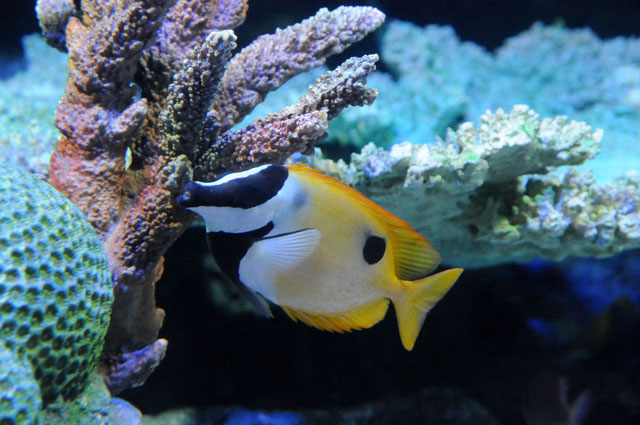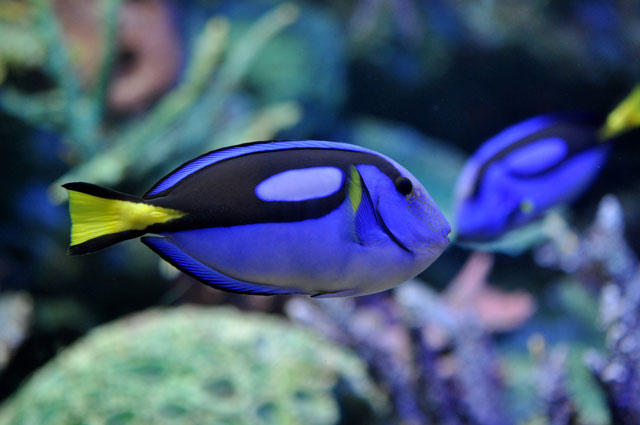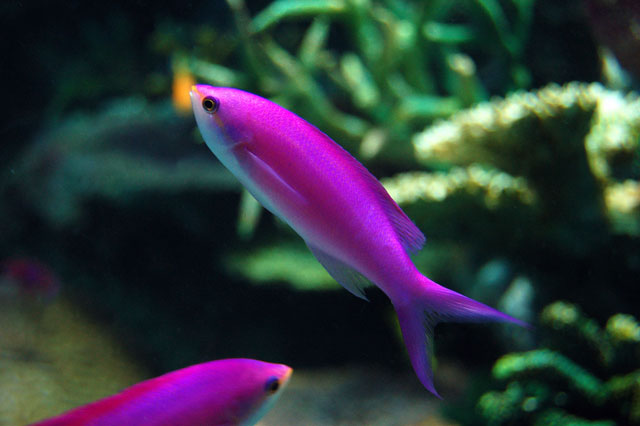The Australian Sea - The Great Barrier Reef -
<<back | next>>
Corals grow only a few centimeters in a year. These corals had grown and propagated themselves over years to form one of the biggest coral reefs in the world. The reef, which is still growing, has been home to various sea creatures.

Blotched foxface
Range: Ryukyu Islands, Western Pacific Ocean
Inhabited in coral reefs, the blotched foxface is popular as aquarium fish for its vivid color. There is an individual difference in the shapes and number of dark spots on the side of the body. They have sharp venomous spines near dorsal, pelvic, and annal fins, which, if stung by them, causes severe pain.

Palette surgeonfish
Range: South of Kochi; Indian Ocean; Western Pacific Ocean
Found in relatively shallow waters, they feed on zoo-plankton and algae. Juveniles are highly dependent on corals and almost always stay with them. Adults can fight against each other using the spines that are near caudal fins. They are not eaten by humans very often: rather, they are popular as aquarium fish for their beautiful body color.

Amethyst anthias
Region: Western Pacific Ocean
They are often found in a large school near reef drop-offs (areas where the sea level drops suddenly) and huge base rocks. Males have a pointy mouth and a yellow caudal fin In Okinawa, they are called Juriguwaaiyu (literally, "prostitute-like fish") in its local dialect, because of the beautiful appearance.
The Great Barrier Reef: Its Outstanding Biodiversity
The famous Great Barrier Reef is more than 2,600km in length with a total area of 344,400km², spreading off the North-East coast of Australia. It is so big (the total area of the Japanese Archipelago) that it can be recognized from space. It is the largest structure in the world created by organisms. The Great Barrier Reef contains an abundance of marine life including fish and corals and was declared a World Heritage Area in 1981 for its outstanding biodiversity.
<<back | next>>
